Offensive mining
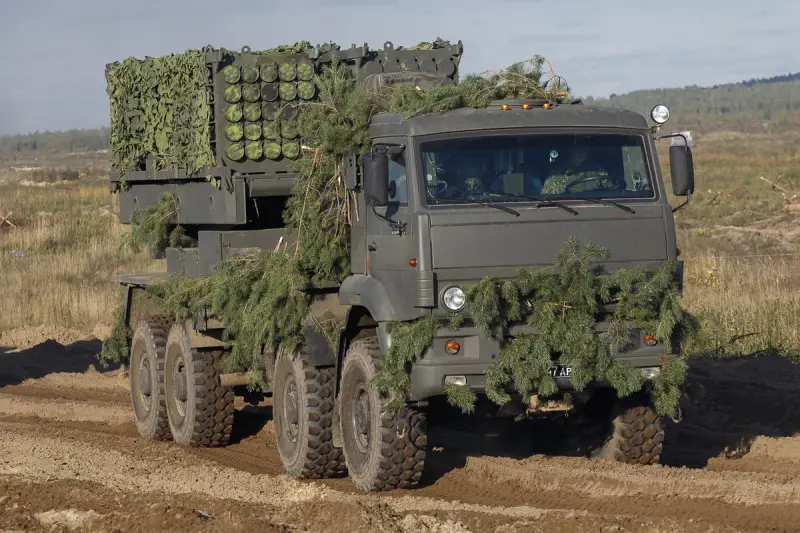
ISDM "Agriculture". An effective system, but, in general, there is such inconsistency in weapons, as with us, this is a mistake. Photo: Wikipedia
While criticizing the Russian command for insufficient attention to isolating the combat area, one cannot help but admit that active efforts are being made in this direction; another thing is that this is often the initiative of commanders and commanders at various levels on the ground, and not the central apparatus of the Ministry of Defense or GSH.
As a result, generals at the front are often forced to solve their problems with unsuitable tools.
One of these unsuitable tools is the existing forces and means of remote mine-laying, primarily due to the way their use is organized.
Both the Russian Armed Forces and the Ukrainian Armed Forces widely use remote mining in various forms. In Russia, traditionally prone to creating various types of “miracle weapons,” they even created a special system for this purpose, known under the code OCD, within the framework of which it was developed - “Agriculture.”
Theoretically, in addition to this system, Russian troops can resort to remote laying of mines using the Grad, Uragan, Smerch MLRS and their modern versions.
In practice, the potential of remote mining in an offensive is not fully used, which, like any flaw, leads to unnecessary losses on our part.
Remote minelaying can also be carried out aviation, but in light of the problems with air defense suppression that Russian aviation faces and its inability to solve them, the issue of air strikes is best left for later.
But it is possible to sharply increase the efficiency of mine laying by the Ground Forces now, for which it is first worth paying attention to what and how is being done at the present time.
The roots of our problems
It’s unpleasant to say, but one of the characteristic features of everything we do is the craving for actions that are not fully thought out.
If it is not clear how this relates to the war, then we can remember on what assessments the hopes of the political leadership regarding the launch of a special military operation (SVO) in Ukraine were based. Have they been thought through? Were there any rash actions in this regard?
Thoughtless, “raw” decisions are our “brace.” With remote mining, this flaw in our mentality manifested itself very, very clearly.
To understand this, let’s first take a short look at how the problem of remote mining was solved, for example, by the Americans.
First, and this is a fundamental difference from us: for the United States, remotely controlled mines are weapons primarily of artillery and aviation, which are used by combined arms and air commanders as part of the American mine doctrine.
The mines used for remote laying are part of the FASCAM family - Family of Scatterable Mines, translated as “family of scatterable mines”. It includes:
Remote Anti-Armor Mine System (RAAMS) - anti-tank mines loaded into a 155-mm artillery shell (9 pieces per shell). They are used against us in Ukraine.
Area Denial Artillery Munition (ADAM) - anti-personnel mines loaded into 155 mm shells (36 pieces per shell).
GATOR mine system - mines for massive deployment from the air.
Volcano mine system (various vehicles) is an analogue of our UZMs, used to create defense lines, we are not interested in this topic, since the Russian Armed Forces are doing more or less well with such mining, and this article is not about these systems.
GEMSS mine system (various vehicles) - the same.
Modular Pack Mine System (MOPMS) - similar to the previous two in principle of operation, but a small-sized, man-portable system that, on command, “disperses” 17 anti-personnel and 4 anti-tank mines. Direct analogue of domestic PKM-1.
The last three systems on the list are defensive. Aviation has already been mentioned, but how the first two systems used in artillery are used is of considerable interest. Here is how the purpose of remote mining systems is defined in English-language sources:
So, as we see, among the Americans, mines are a means of the “commander controlling the maneuver [of troops]” (de facto combined arms), which allows him to create “situational” obstacles for the enemy (that is, those the creation of which may be required by a changing situation) or destroy it completely.
That is, this is a weapon that is used by a combined arms commander in maneuver combat, and, within the framework of this formulation, it is not considered exclusively defensive.
At the same time, however, in the “Doctrine of Mine and Mine Countermeasures Operations” (FM 20-32) of the US Army, mines, as indicated, serve as a “defensive weapon”, but can be used as an offensive weapon.
Details can be found in the 517-page document (search for “FM 20-32 Mine/Countermine Operations”, English). This document may be outdated, but the amount of information about mine warfare cannot fail to impress.
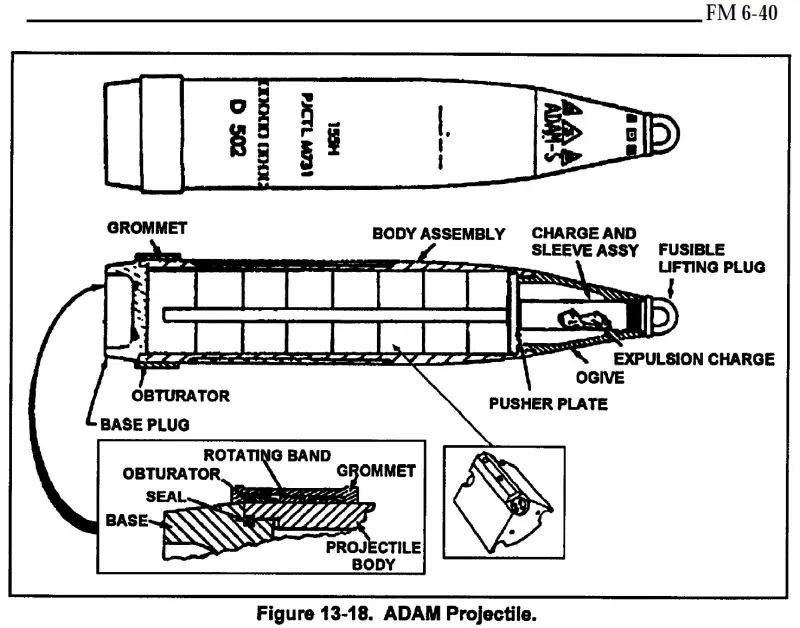
M731 ADAM 155mm artillery round used by the US Army. The diagram shows segmented M72 anti-personnel mines
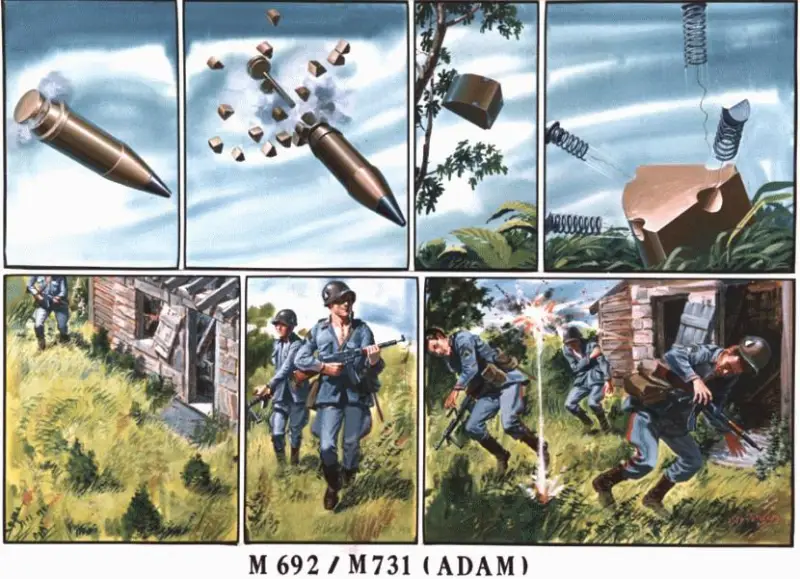
Application of a shot - 36 mines are scattered from a projectile in the fall, then pieces of wire (7 pieces) are thrown out from each mine, touching which with anything will lead to the mine exploding, and the detonation itself - the mine jumps up, detonation with the formation of approximately 600 fragments, each of which has a speed of 900 m/s
In our country, mine warfare is one of those subjects that “haven’t been thought through.”
On the one hand, Soviet industry could easily give domestic artillery the same capabilities that US and NATO artillery had and still has. Adjusted for the fact that our 152 mm projectile is smaller and the 203 mm projectile is less accurate, but still.
In addition, missiles for multiple launch rocket systems, equipped with mines, both anti-personnel and anti-tank, have long been created by the domestic industry and adopted by the Armed Forces.
There are regulations that specify how they should be applied. I have experience using it.
But we don’t have a solid mine warfare doctrine hammered into the head of every lieutenant. Moreover, in the “Rules of Shooting and Fire Control” of artillery, the existence of rockets with mine equipment is simply mentioned, and that’s all. It is difficult to imagine the organizational use of such ammunition at the level of, for example, a brigade commander.
On the other hand, for some reason, the engineering troops have their own system, separate from the artillery, known under the code “Agriculture”. And again, these units of engineering troops in the offensive of some motorized rifle brigade will definitely not be used to solve tactical problems for organizational reasons.
Here it is necessary to note from a technical point of view that instead of the notorious “Agriculture”, MLRS with appropriate ammunition could and should have been used - this would have saved a lot of money and spread the practice of remote mining far beyond the boundaries of the engineering troops. But they did it as they did it.
In fact, in our case, the situation with remote mining looks like this. There are 300-mm missiles for Smerch, filled with both anti-tank mines and PFM-1 anti-personnel “petals”.
But "Smerchs" mainly belong to the artillery of the RGK. In theory. In practice, the author knows of one case when these MLRS were assigned to a battalion, and not because it was necessary to solve a combat mission, but because they simply had to be attached somewhere. This, of course, is an exception and an anomaly, but, again, such cases do not contribute to the competent use of forces and means.

300-mm 9M527 rocket with a warhead equipped with anti-tank mines. Picture: Rosoboronexport
Naturally, when in the PSiU about remote mining there are three mentions of the type “this happens,” and the units themselves with 300-mm MLRS are distributed along the front by the decision of at least the group command, then they will rarely solve tactical problems, if at all. In addition, ammunition for Smerch is very expensive.
There is the possibility of remote mining using the Uragan MLRS, the 220-mm rockets of which can have a cluster warhead equipped with anti-tank and anti-personnel mines.
Analysis of the range of 220-mm rockets filled with mines is available here to register:, the Hurricane missiles differ fundamentally from other rockets with mines only in the number of mines.
And, apparently, it is the use of these MLRS that mainly ensures remote mining. But here organizational and doctrinal problems arise - firstly, although the Ukrainian Armed Forces complain about remote laying of mines, there is not a single evidence that, apart from some losses in such minefields, mining managed to disrupt any important actions of the Ukrainian Armed Forces when they were defending themselves , for example, to disrupt the transfer of reserves somewhere or the withdrawal of troops from the threat of encirclement. Thus, in some Ukrainian sources one could find complaints about the use of remote mining near Avdiivka, but this did not disrupt the withdrawal of the main forces of the Ukrainian Armed Forces.
Secondly, there is not a single evidence of the systematic and massive use of this type of mining by the Russian army on the offensive. Well, not everywhere there are such MLRS.
The use of the Grad MLRS for remote mining does not seem rational - a Grad rocket can contain either 5 anti-personnel mines or three anti-tank mines, which is very little.
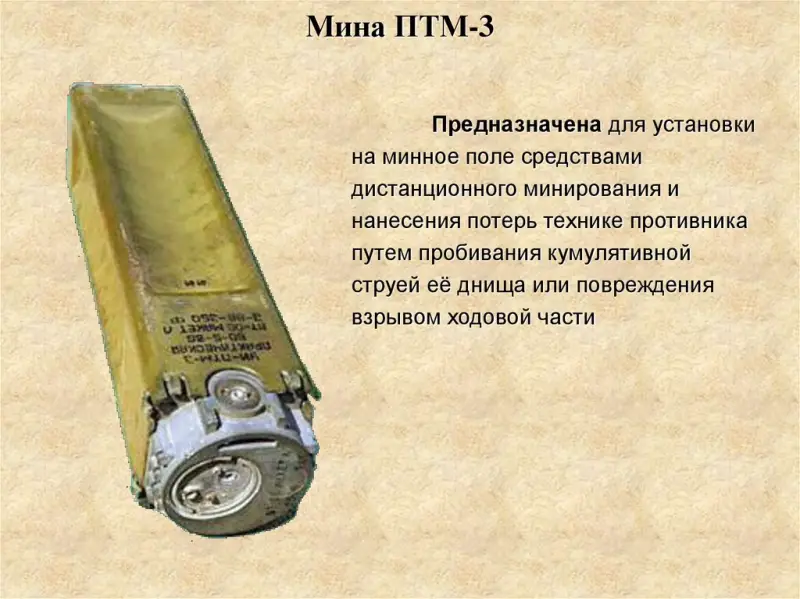
Anti-tank mine PTM-3 - the main anti-tank mine for remote mining
To understand, one “package” of “Smerch” of 16 rockets allows you to deploy 300 PTM-3 anti-tank mines at a range of up to 70 kilometers, while the “Grad”, firstly, has a lower range, and secondly, in order to deploy the same number of mines, 100 rockets are needed with the ammunition load of one installation being 40 pieces. In total, three vehicles should fire, which will have a total of 20 missiles left for all of them after this (for example, two will fire the entire “package”, and one will fire half).
Together with the short range compared to Smerch and Uragan, the lack of a clearly defined mine warfare doctrine for combined arms commanders and the availability of rockets of the required type in 100% of cases, these features of the Grad lead to the fact that remote Mining is used rarely and unsystematically.
And "Agriculture". The system is in service with the engineering troops; there are no units of these troops with these installations - there is no mining using the specified method.
In general, we have the same thing with remote mining as with everything else - there are some means, some are effective, some are not, there is a certain number of specialists, there are different weapon systems in service with different branches of the military, but there is no system.
And even the unsystematic use of these means in defense is used much more often than in the offensive.
Meanwhile, the massive regular use of remote mining in an offensive can have a very serious effect. It is worth outlining the contours of this.
Mines as an offensive weapon
Encyclopedia of the Ministry of Defense tells uswhat a minefield it is:
Moreover, even in this definition there is no concept of what barriers are actually needed for. It’s clear that any commander understands why, but, firstly, in a slightly different way, and secondly, without theory there is and cannot be full-fledged practice of using these barriers. Especially on the offensive.
Let's give our own understanding to the question.
A remotely installed minefield (using MLRS and remote mining systems) is a means of preventing enemy forces from maneuvering. The goals of setting up such a minefield are both to prevent enemy forces from maneuvering in one direction or another, and to force the enemy to maneuver in the desired advancing direction. A special case of this is forcing enemy forces to stop moving and stop, blockade in a given area of terrain, etc.
The remotely deployed minefield must be monitored. Enemy engineering units attempting to make passages through it must immediately open fire.
Unmanned aerial vehicles can be used for surveillance, and attack UAVs, mortars, artillery, MLRS and other means, if necessary, can be used to destroy enemy engineering units.
Since in our concept, remote laying of mines is controlled by a combined arms commander, and they are carried out by subordinate rocket artillery units (and in the future, perhaps, barrel artillery), then such use of minefields does not pose any problems, everything is done according to a single plan, within the framework of one and the same idea.
What does the practical implementation of such a scheme give?
Firstly, this makes it disproportionately easier to solve the problem of isolating the battlefield. When the road along which the enemy is transferring reserves under fire is one story, when in principle it is impossible to drive along it - another.
In addition, there can be a lot of roads - forest, field, etc., and in dry weather the entire area becomes a road, and here mines are the optimal means. The banal exclusion of enemy reserves from the attacked position or attacked area for several days, if carried out systematically, allows us to significantly reduce the losses of our troops.
The second advantage that this method of action provides is the ability to direct the enemy’s movement in the desired direction.
It is known that proper use of terrain often greatly simplifies the solution of combat missions.
Thus, defense in narrow defiles, between, for example, swamps, mountains, etc., is much more stable, all other things being equal, than defense in open tank-accessible terrain without elevation changes.
But what if we are talking about the need to drive the enemy into a “fire bag” precisely on tank-accessible, flat terrain?
This is where the “American” method comes in handy—creating “situational” obstacles to troop maneuver by quickly “sowing” mines in the directions in which the enemy needs to be prevented from moving, and ensuring oneself the ability to hit his sapper units in any attempt to clear mines in these directions , you can send his troops to where it will be convenient to meet them, driving them into “corridors” between minefields.
Finally, massive remote mining with simultaneous fire control over minefields makes it possible to prevent the withdrawal of enemy troops.
This is especially valuable in conditions when troops advance slowly and encirclement maneuvers are not possible. Without preventing the retreat, the enemy, although with losses, will leave. Even artillery shelling of his columns does not guarantee anything - vehicles will leave the roads and move to the sides, personnel will dismount and run away, abandoning their equipment.
Covering a retreating column with both anti-tank and anti-personnel mines will leave the enemy no other options other than to die or try to surrender by giving signals drones.
Simply because it will be impossible to move either with your feet or with the vehicle, and if you fail to surrender, then the entire unit on the march will be calmly and methodically finished off with the combined use of FPV-drones, artillery, MLRS and other means, and it will be possible to completely destroy all equipment, to such a state that it cannot be restored by striking at it repeatedly.
The use of such tools in an offensive will make the ratio of losses in offensive operations more favorable for the RF Armed Forces, and the offensives themselves will proceed faster.
Organizational and technical problems
All of the above is simple and at the first stage can be implemented with the equipment available in the troops, namely the MLRS “Grad”, “Tornado-G”, “Uragan”, “Smerch”, “Tornado-S” and the available ammunition for them.
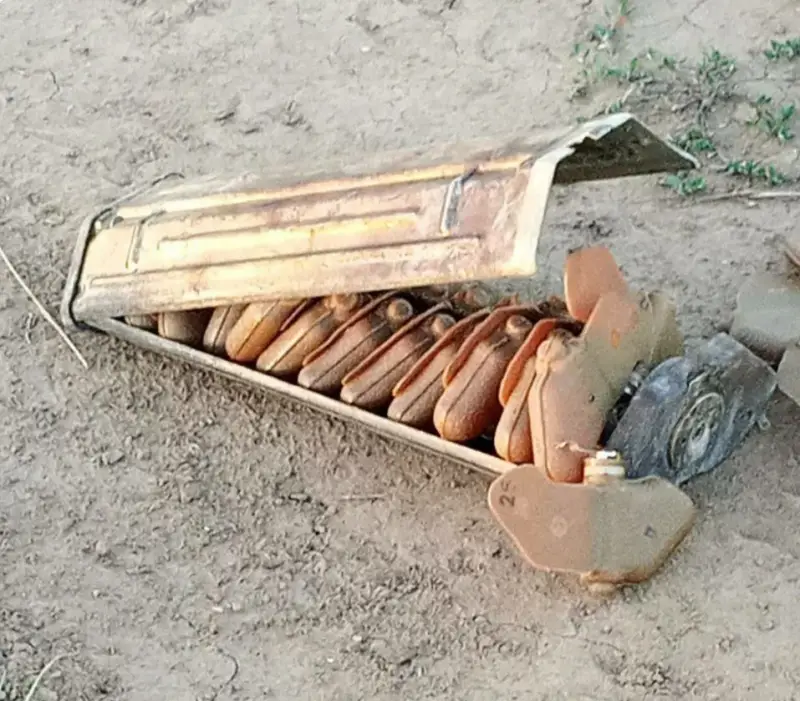
An abnormally triggered cassette from the warhead of an MLRS rocket with PFM-1 anti-personnel mines
There are not so many problems that need to be solved in order to turn mines into effective offensive weapons.
The first is to convey this information to military commanders in the correct form, with ready-made standard scenarios (mining to isolate the battlefield, mining to prevent maneuver, etc.), instructions, etc. There is nothing special to teach here, and by and large speech rather, it is about stimulating commanders to use mining more widely, while at the same time slightly systematizing the knowledge that they already have.
It may be necessary to develop a number of new recommendations for the use of remote mining for commanders at different levels.
The second is to increase the supply of troops with mine-loaded rockets to a quantity that will allow the use of these methods on a wide scale. This will be somewhat more difficult in light of the difficulties that Russia is experiencing in the production of ammunition, but it is still quite feasible.
The third is to make sure that the troops are ready to use remote mining in conjunction with constant observation of the established minefield or fields, since without this the enemy will clear everything very quickly - a minefield means little without fire cover, and the latter is impossible at a great distance without observation. Readiness lies in the availability of crews for unmanned aerial vehicles and the devices themselves, and in the ability to organize their constant use.
And finally, last on the list, but not least, it is necessary to achieve the unconditional compilation of forms for such quickly laid minefields - in light of the fact that this will be done by artillery, and not by engineering troops, this may be the most difficult thing (sounds strange , but it’s time for us not to be surprised by anything).
The fact that modern mines are equipped with self-destructors should in no way cancel out the work with forms.
It is necessary to ensure that your troops are fully informed about where remote mining has been carried out. Achieving this will be much more difficult than it seems in the light of our realities, but if you prepare for such actions in advance, then it is possible to resolve this issue.
From a technical point of view, it is necessary to follow the path of the Americans and develop artillery shells with mine equipment. Taking into account the presence of 203-mm artillery in the troops, this can be done in this caliber - such guns lack accuracy, and there is little point in using them specifically as artillery, but with mines this will not be a big problem, as will the wear of the barrels. And the size of the projectile allows you to “pack” more payload into it.
However, the 152-mm caliber should also contain mine-loaded shells. As well as 122 mm rockets with an increased number of mines.
But this, apparently, will happen after the end of the Northern Military District and after the change of leadership of the Ministry of Defense.
Closing the issue of offensive mining, it is worth noting the successful experiments of the Ukrainian Armed Forces and our troops (the latter on a significantly smaller scale compared to the Ukrainian ones) in installing mines from unmanned aerial vehicles. You can’t lay out many mines this way, but you can literally “plant” them under enemy equipment, dropping them on the road a kilometer or two away from a column or armored vehicle already moving along the route.
Optionally, this method of minelaying should also be used, however, in the case of the RF Armed Forces, it will be hampered by the lack of heavy copters, with which the Armed Forces of Ukraine have no problems. However, in comparison with the effect of massive mining, such piece mining from the air is insignificant.
Conclusion
The use of remote mining in an offensive can significantly facilitate the conduct of offensive combat operations by ground forces.
First of all, this will help facilitate the implementation of tasks to isolate the combat area, make it difficult or impossible for the enemy to bring reserves into battle, maneuver for the purpose of counterattacking our troops, and the withdrawal of enemy troops from their positions in the event of a threat of encirclement.
Also, the use of remote mining to stop enemy units in the process of advancement will make it possible to more effectively, with large losses for the enemy, destroy it with artillery fire and the use of FPV drones.
In order for remote mining to realize its potential in the RF Armed Forces, organizational measures that are minimal in complexity, a fairly moderate-scale supply of troops with appropriate ammunition, as well as additional training for brigade-division level commanders and artillery officers at the same level are required.
The basis for the success of offensive mining is the organization of observation of minefields and fire defeat of enemy sappers trying to clear them.
Organizing such measures is a key part of preparing for offensive remote mining.
But the first step should be a change in consciousness - mines should begin to be seen as an offensive weapon of artillery (for now only rocket), and not just as a defensive weapon of engineering troops.
Information